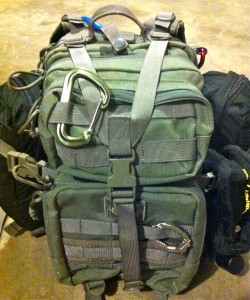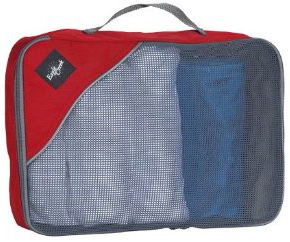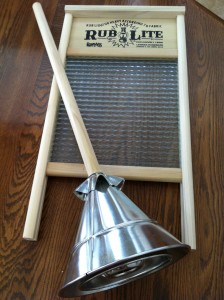Packing For The Trip
Not much happened this week, prepping-wise, because we were in Colorado visiting family for a chunk of it. Sarah and I went down for five days with the kids, and the kids are staying another week with their grandparents and cousins.
 When I was packing for this trip–as I did for our Las Vegas trip last month–I pondered what I could bring to help me be as prepared as possible while traveling. Obviously on any trip like this you can’t prepare for a major disaster (if you think there is likely to be a major disaster maybe it’d be better to just stay home); you can be more prepared for minor problems though, and minor problems are far more likely to happen. We try to avoid checking bags, both because it’s a hassle and most of the time costs extra; so we’re more limited to what we can bring. Since we were going to be staying with my parents I wondered if I really needed to bring much of anything. Then I remembered that we were going to be renting a vehicle and doing a lot of driving around, and of course there wouldn’t be anything extra in a rental vehicle.
When I was packing for this trip–as I did for our Las Vegas trip last month–I pondered what I could bring to help me be as prepared as possible while traveling. Obviously on any trip like this you can’t prepare for a major disaster (if you think there is likely to be a major disaster maybe it’d be better to just stay home); you can be more prepared for minor problems though, and minor problems are far more likely to happen. We try to avoid checking bags, both because it’s a hassle and most of the time costs extra; so we’re more limited to what we can bring. Since we were going to be staying with my parents I wondered if I really needed to bring much of anything. Then I remembered that we were going to be renting a vehicle and doing a lot of driving around, and of course there wouldn’t be anything extra in a rental vehicle.
So I started with our ‘five basic needs’.
- Food: I kept the four power bars in my bag, but on a trip like this going without food isn’t too big of a risk.
- Water: I have a 3-liter CamelBak and a 750 ml water bottle in my pack (redundant). Enough for a day trip for myself and to share as needed. The kids each had their own water bottles.
- Shelter: It’s summer so I took out the fleece jacket, rain jacket, and warm gloves, but I left in the thermal shirt and stocking cap. I also had leather work gloves and a small tarp.
- Security: Again with just carry-on luggage you’re very limited: no knives, no pepper spray, no firearms. I do carry a heavy chain with my pack to secure luggage as needed, it could be used as a weapon if necessary.
- Energy: I have a flashlight and a headlamp in my pack, both use AAA batteries; I also have extra AAA batteries and a cell phone charger. I took my fire starting kit out, but left in a couple of lighters.
- Medical (6th basic need?): I have my personal trauma kit and then a back-up first aid kit with extra supplies. Excessive? Maybe. But I do have the knowledge and training to take care for those around me and I’m the one everyone will come to. I also carry a sampling of OTC meds.
- Hygiene: I always have a towel (per Hitch Hiker’s Guide to the Galaxy), a ziplock bag of wet ones, and some antibacterial wipes.
- Miscellaneous: I have a few basic hand tools, zip ties, some duct tape, para cord, paper and pens, and a couple carabiners.
 My bag is always checked VERY closely by the TSA, but it’s now been vetted in the Seattle, Las Vegas, and Colorado Springs airports. And yes, in addition to this I did fit my clothes. After years in the military, and long motorcycle trips, I have learned to pack lightly and very compactly. I can fit most of my clothes in an Eagle Creek Pack-It Cube which fits nicely in my pack’s main pocket.
My bag is always checked VERY closely by the TSA, but it’s now been vetted in the Seattle, Las Vegas, and Colorado Springs airports. And yes, in addition to this I did fit my clothes. After years in the military, and long motorcycle trips, I have learned to pack lightly and very compactly. I can fit most of my clothes in an Eagle Creek Pack-It Cube which fits nicely in my pack’s main pocket.
 Also this week, the hand washing laundry stuff we ordered arrived. We are now proud owners of a Rub-Lite Glass Washboard and a Rapid Washer. Next month we’ll get a couple of wash tubs and probably a hand wringer. Then we’ll be ready to start learning that skill set.
Also this week, the hand washing laundry stuff we ordered arrived. We are now proud owners of a Rub-Lite Glass Washboard and a Rapid Washer. Next month we’ll get a couple of wash tubs and probably a hand wringer. Then we’ll be ready to start learning that skill set.
What did you do?






